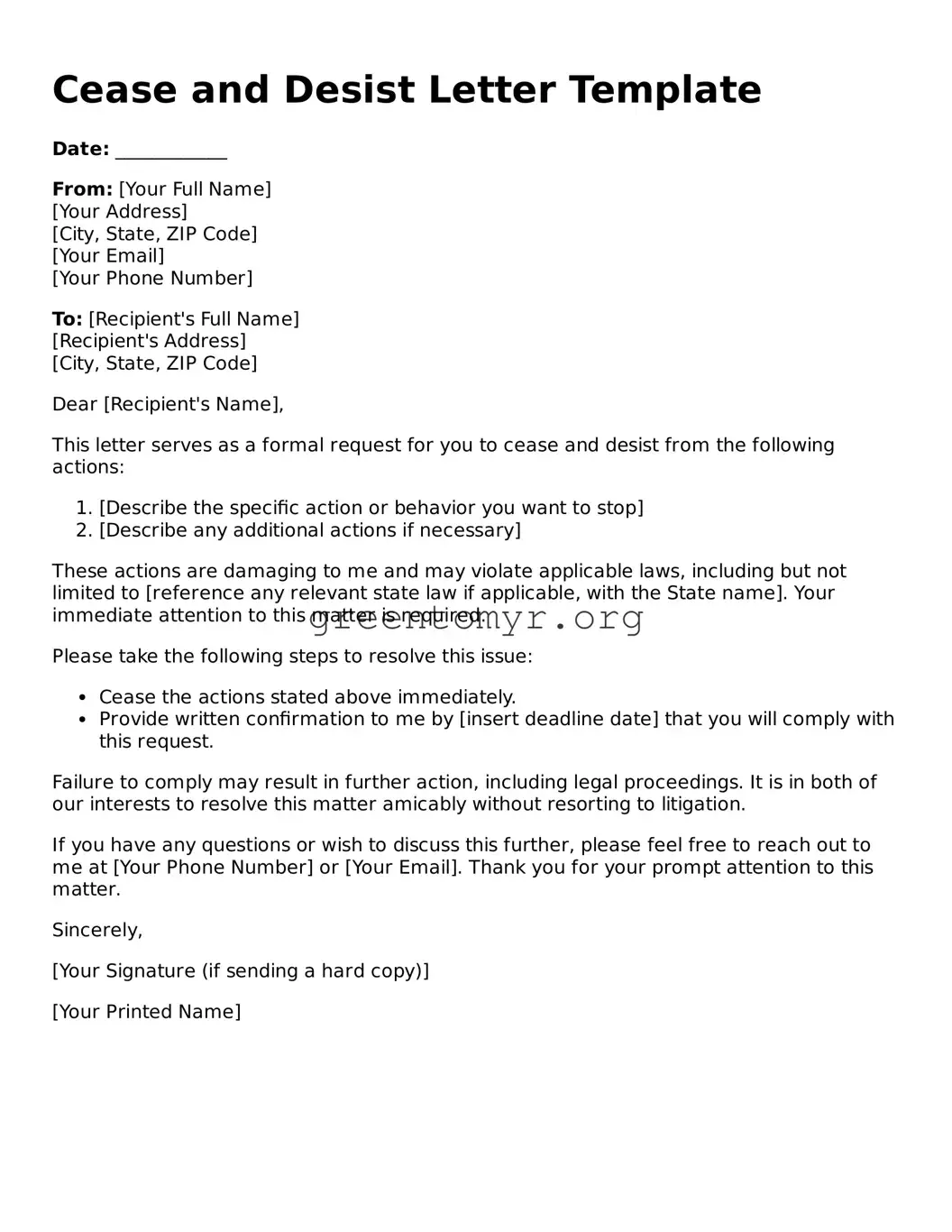Cease and Desist Letter Template
Date: ____________
From: [Your Full Name]
[Your Address]
[City, State, ZIP Code]
[Your Email]
[Your Phone Number]
To: [Recipient's Full Name]
[Recipient's Address]
[City, State, ZIP Code]
Dear [Recipient's Name],
This letter serves as a formal request for you to cease and desist from the following actions:
- [Describe the specific action or behavior you want to stop]
- [Describe any additional actions if necessary]
These actions are damaging to me and may violate applicable laws, including but not limited to [reference any relevant state law if applicable, with the State name]. Your immediate attention to this matter is required.
Please take the following steps to resolve this issue:
- Cease the actions stated above immediately.
- Provide written confirmation to me by [insert deadline date] that you will comply with this request.
Failure to comply may result in further action, including legal proceedings. It is in both of our interests to resolve this matter amicably without resorting to litigation.
If you have any questions or wish to discuss this further, please feel free to reach out to me at [Your Phone Number] or [Your Email]. Thank you for your prompt attention to this matter.
Sincerely,
[Your Signature (if sending a hard copy)]
[Your Printed Name]
